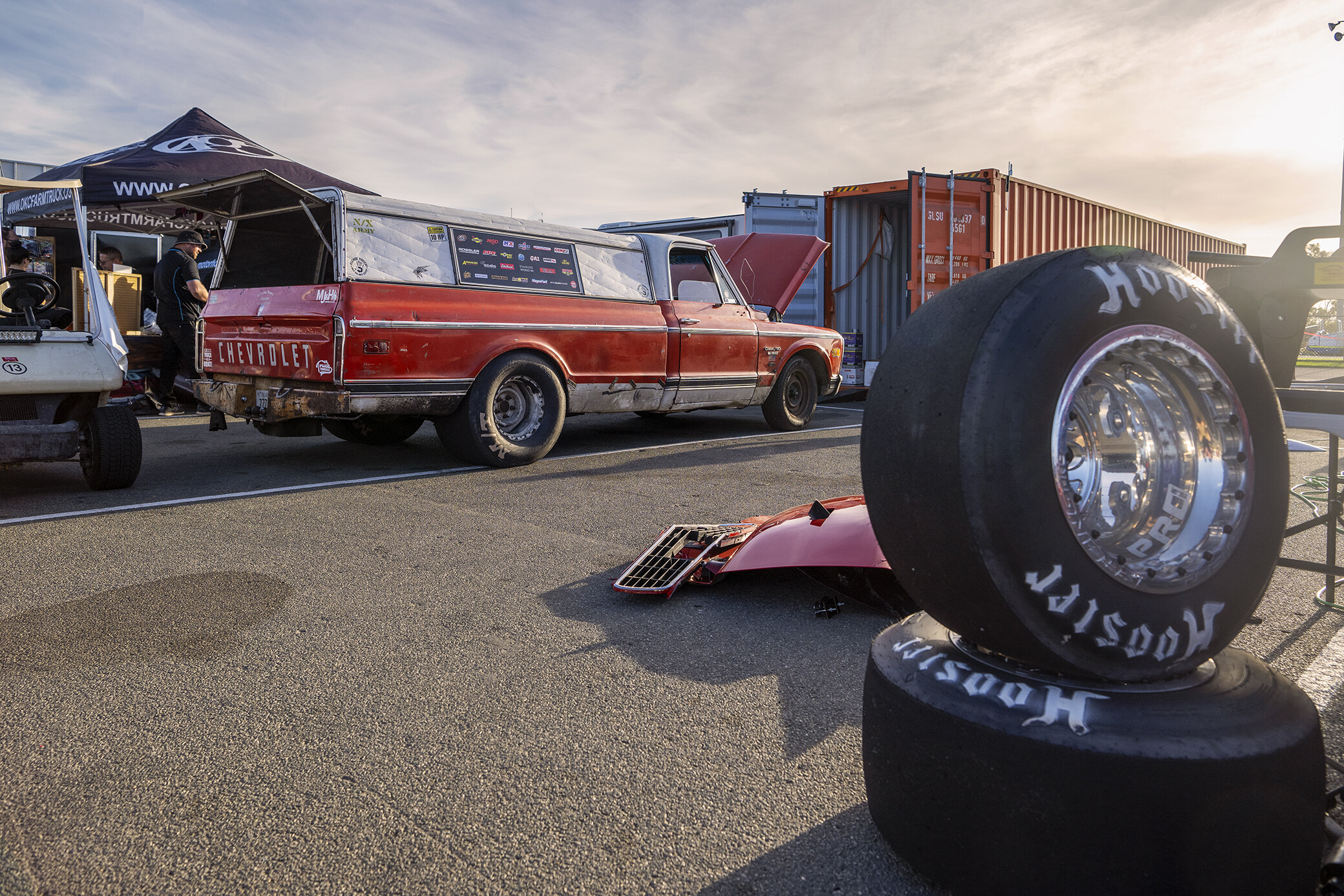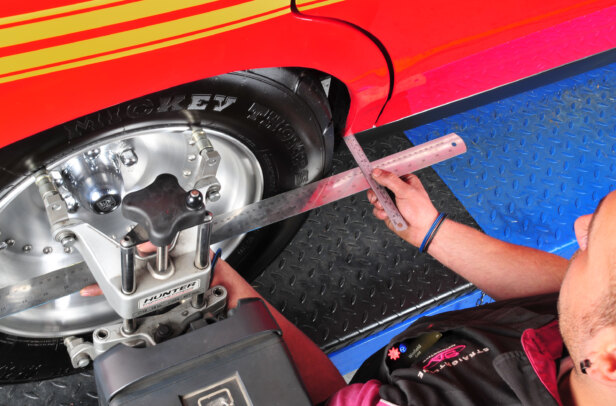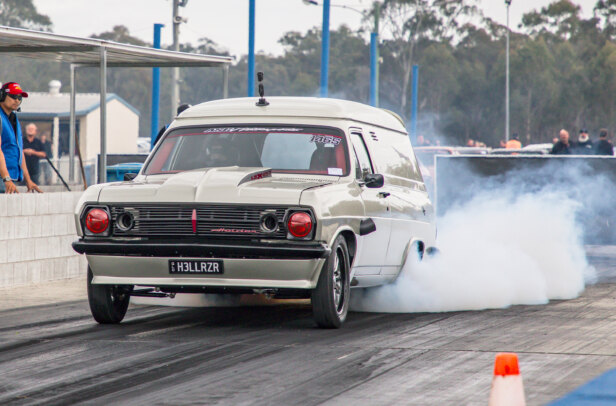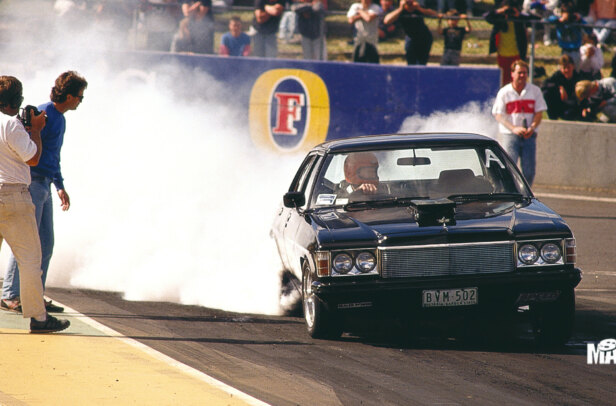Choosing tyres doesn’t seem half as fun or sexy as choosing wheels, but it’s more important, both for your car’s and your own well-being.
There are various types of tyres designed for different purposes, so to get the best out of your daily driver, weekend classic, work ute, race car or trailer, it makes sense to buy specialised rubber to suit. Let’s dive into what you need to know.
READING YOUR RUBBER
The numbers on the side of a tyre denote several crucial specs, starting with the size. We’ll use a 275/50R15 tyre as an example: the first number is the tyre’s width in millimetres at its widest point; the next is the height of the tyre’s sidewall as an aspect ratio (so this tyre’s height is 50 per cent of its width); R denotes radial construction (D for bias-ply); and the final number is the wheel diameter.
Other alphanumeric codes on a tyre will follow the size, including the load and speed rating. The two- or three-digit load rating shows whether a tyre suits a light or heavy vehicle, as determined by the manufacturer’s build plate or engineering signatory.
The speed rating gives a loose indication for whether a tyre is designed for high-performance or standard street use, from as low as 120km/h (L-plate rated) up to the top rating of Y for tyres capable of handling over 270km/h.
Treadwear (the speed at which a tyre will likely wear out) is listed as a three-digit code on the sidewall near the traction and temperature ratings.
The treadwear rating can be specified for certain racing classes or events, like Optima’s Ultimate Street Car Challenge, which mandates a minimum treadwear rating of 200 to prevent people running spicy track rubber. The higher the treadwear number, the longer it is likely to last.
The temperature and traction ratings are not critical for many late-model cars with stability control and ABS. Traction has a single-letter code relating to how much grip a tyre has when dragged across wet ground in a fixed position (replicating a locked-wheel situation), while temperature is a rating of heat dissipation at high speed.
Finally, there’ll be an alphanumeric DOT code on the sidewall. The last four digits are the date code indicating how old the tyre is, which can be an important safety consideration. If the tyre has been sitting around on a shelf for years, it could be well past peak performance!
The four-digit date code denotes the week and the year the tyre was made. So, 4720 would mean the tyre was manufactured in the 47th week of 2020.
TYRE TYPES
CROSS-PLY
The go-to tyre construction technology until the late 1960s, when radials took over, cross-ply (also known as bias-ply) tyres have cords in the carcass that crisscross at a 45-degree angle between the tyre’s beads. Cross-ply tyres don’t offer as much flex as radial tyres, which can lead to high-speed wandering and following of road imperfections.
Poor wet-weather grip, a narrow tread face and a greater risk of a blow-out from road hazards were other downsides that saw them fall out of favour, but for a vintage, pre-70s look, there’s simply no better choice than the cross-ply.
RADIAL
One of the biggest advances in vehicular rubber was the introduction of the radial tyre by Michelin in 1949 on the Citroën 2CV, though the first radial tyre actually dates all the way back to 1914.
Radial tyres differ from cross-plies in that the cord plies are arranged 90 degrees to the direction of travel, giving them lower rolling resistance that improves fuel economy, a wider tread pattern that improves grip and steering feel, and better cushioning, making them more comfortable and less prone to blow-outs.
DRAG SLICK
When someone says “motorsport tyre”, you more than likely think of a slick. In drag racing, these super-soft-compound, race-only tyres were first marketed by M&H Tires in the early 50s. They are generally bias-ply construction and run with low pressure, allowing brutally fast launches when they wrinkle up; this gives a larger contact patch on the hit.
While slicks are made as light as possible, the cross-ply construction still leaves them heavier than a drag radial, and there can be issues with wandering in the top end with very low pressures.
DRAG RADIAL
Developed as a road-legal tyre that can also be used on the strip, the design of the drag radial means it can handle the higher weights of quick street cars compared to stripped-out, track-only machines.
When a car is set up to use them, it is argued that drag radials are more consistent than a traditional slick, boasting a higher trap speed due to their lower rolling resistance, along with increased top-end stability.
SEMI-SLICK
Sometimes called ‘R-compound’, semi-slick tyres are the circuit racing equivalent of a drag radial, falling somewhere between a full-blown race-only slick and a road-legal treaded tyre.
Nearly all semi-slicks feature radial construction and aggressive tread patterns that prioritise dry grip over wet-weather performance, with stiff, square sidewalls resistant to rolling under heavy cornering.
A softer compound means they live a short, spectacular life. Ultra-high-performance (UHP) tyres have closed the gap on semi-slicks in recent years for all but the most serious street cars.
ULTRA-HIGH PERFORMANCE
UHP tyres are a bridge between commonly available low-profile tyres and the world of semi-slick and other motorsport tyres. Normally found as original equipment on hi-po factory cars, these fast-wearing, high-grip tyres aren’t as compromised for road use as a semi-slick.
They still work well in the wet, offer decent ride quality, and don’t need warming up. The downside is that most UHP tyres are much more expensive than a regular performance tyre, and can even be costlier than entry-level semi-slicks.
ALL-TERRAIN
All-terrain tyres are designed to work well both on tar and in light off-roading, which would normally require two completely different types of tyre.
This means they’re compromised in their ultimate performance both on- and off-road. However, they don’t roar like muddies on the road, and will climb fire trails better than highway tyres.
MUD TERRAIN
The most aggressive-looking off-road tyre (short of specialty studded rubber designed for use on ice), mud terrain tyres feature giant tread blocks spaced out across the face and top of the sidewall.
Normally made from a softer compound and designed to be aired-down to improve the contact patch, mud terrain tyres give their best grip in sloppy, low-traction environments, or on rough, rocky trails. They cost more, wear out quicker, and don’t work on the road as well as all-terrains, but they will get you up that snotty black diamond hill.
TYRE PARTS
CONTACT PATCH
The contact patch is the small footprint of tyre rubber that runs along the ground and is the point of contact for your car at any given time. So, y’know, it’s kind of important. Drag racers run low pressures in the slicks on their driven wheels to increase the contact patch, giving more grip when they hit the go pedal.
Similarly, off-roaders will often air down their tyres on sand or other low-grip conditions, as special 4×4 tyres will often have treaded sections on the shoulder to improve grip at low pressures.
BEAD
The tyre bead contacts the rim on each side of the wheel and is made of high-strength rubber reinforced with steel wire. The bead seats solidly against the wheel’s rims to prevent pressurised air leaking out, which would cause a flat.
On pneumatic, tubeless tyres, the bead has to seal tightly and resist lateral movement under cornering forces.
PLIES
These cords are moulded into the rubber body of the tyre, and their orientation with respect to the direction of travel is key to identifying if a tyre is bias-ply or radial. Plies hold a tyre’s shape by stopping the rubber’s natural tendency to stretch as internal pressure rises.
A modern radial tyre will have plies perpendicular to the direction of travel, and they’ll be arranged in different layouts to suit the various parts of the tyre needing reinforcement.
BELTS
Modern tyres use steel belts running along their circumference to hold the plies in place. They’re the things burnout competitors hate, as they flail the sides of cars when the tyre disintegrates mid-skid. While steel is most common, belts can also be made of fibreglass or rayon.
After inventing the radial tyre in the mid-1940s, Michelin introduced the steel-belted radial in the 60s, and its improved resistance to punctures immediately found favour.
SIDEWALL
The vertical face of the tyre connecting the tread and bead, the sidewall is made of rubber with fabric or steel cord reinforcement to provide tensile strength yet stay flexible enough to transfer a vehicle’s torque to the tread face of the tyre.
It’s also where crucial information is provided on the tyre’s specifications.
SHOULDER
The shoulder spans the tread face and the sidewall of the tyre and provides continuous contact with the road while manoeuvring. Small, slit-like grooves called sipes run across the shoulder and through the tread face to allow the tread blocks to move.
This increases traction by creating an additional biting edge. Sipes are especially helpful on ice, light snow, and loose dirt. Additional indentations in the tread improve tyre cooling, which is important at speed.
TREAD PATTERN
Tread pattern refers to the design of the grooves and channels in a tyre’s face, and how they fit around the rubber tread blocks moulded to the tyre’s circumference.
These blocks and channels allow standing water on the road to escape from under the tyre to prevent aquaplaning. The design of the pattern can affect road-holding, high-speed stability, steering feel, fuel economy, tyre noise and more.
MAKING THEM LAST
Ensuring you get the maximum life out of your tyres is a smart move, as you’ll be spending hundreds if not thousands of dollarydoos on these rubbery appliances.
Short of dropping skids every time you kick it in the guts, running improper inflation will kill tyres faster than almost anything else. Look up the tyre plate in your car’s door jamb or glovebox for optimal pressure settings, and check pressures weekly to stop tyres going off through general driving conditions and make the car nicer to drive.
Worn shocks and bushes will also kill tyres super fast, so keep an eye on these areas of your ride. Changes to your driving style can also help with tyre wear, as tyres operate best inside a specific temperature range.
REMAINING COMPLIANT
We all want to jam as big a rear tyre under our car as possible, but there are legalities to consider if you want to roll sweet on the street. If you’re unsure whether your car’s planned wheel and tyre package will be legal, it is best to consult an engineering signatory before you cut up your ride or splash cash on parts.
Tread depth is what’s most likely to attract unwanted attention, and most states require more than 1.5mm of tread at any part of the tyre that contacts the road.
Excessively wide tyres have less pressure pushing the rubber onto the road than narrow tyres, which reduces grip in the wet and ultimately leads to aquaplaning. For the pro street homies, front tyres are required to be at least 70 per cent of the width of the rear tyres, and it is illegal to mix radial and bias-ply tyres on the same axle.
FINDING THE PERFECT FIT
There is a dizzying range of tyre sizes, models and brands, so the first step in making a choice is to have a reasonable idea of what you need the tyres to do. Check your car’s build plate to determine what load rating your tyres need to be, and, if you’re still running standard-size wheels, what size tyres the OEM fits to your model.
If you change the car’s tyre size, you’ll have to pay attention to rolling diameter as well as a few other factors. Consult an online tyre size calculator to help keep your rolling diameter and your car’s gearing close to spec.
Moving to a wider, lower-profile tyre will give your car quicker steering response along with increased stopping and cornering grip. However, high-performance, low-profile tyres do come at the expense of ride firmness and extra road noise. Going taller in the tyres will often soften the car and can make it feel doughy at speed.
When building a car or setting it up to run in a particular tyre class for racing, it’s a good idea to throw one tyre of that size underneath to check for clearance through the wheel’s full range of motion. Some motorsport tyres like drag radials or slicks will also grow taller on a run, so don’t fit everything snug.
RADIALS VS SLICKS
One spicy topic that never fails to fire people up is the slicks-versus-radial-tyres-at-the-drag-strip debate.
We went straight to Paramount Performance’s Terry Seng, who has a wealth of experience running both types of tyre, to get his take.
What are the benefits of running radials on a quick street car, Terry?
Room is probably the primary advantage to a radial, as they don’t grow like a slick, and space is a huge issue with street cars. You can run a 28in tyre on a car with barely any clearance and it won’t rub, unlike a slick, which will grow to over 30in.
Radials also drive nicer, as they track straight and don’t move the car around like a slick; even on the equivalent-sized tyre, the slick will walk down the track.
Will radials work on any car?
If the suspension and car set-up is good, then anything on a radial will go straight. That is a big advantage for a driver, as it makes it easier to drive.
Why run a slick over a radial?
This normally comes down to the event or class you want to run. At a high-glue event, you’d struggle with a slick because you’d have too much grip and the slick’s soft sidewall would fold over. It’s the reverse issue for No-Prep events, because when a radial spins, it doesn’t recover like a slick.
A slick can spin and, with a quick pedal, drive through. With radials, you have to wait ’til it totally stops spinning before you hit it again.
We’ve seen that at Drag Challenge many times! What are the basic set-up changes required for a quick street car to switch from slicks to radials?
Changing your rear gear due to overall tyre height difference between tyres is a key factor, so you can maintain your mile-per-hour and cross the line at the best rpm. Because of the way they launch, you can also go to a lower diff ratio with a slick compared to radial.
Running a radial front tyre with a slick rear means the front doesn’t walk with the slick rear, and that can put you into the wall, so you need a rag [bias-ply] front-runner. You can run a rag front and radial rear, though.
I’d also change my four-link geometry, and I’d put a softer shock in the rear, as the valving is pretty much opposite between slicks and radials. You want the rear end to squat a bit on a slick, but the radial is the opposite – you want the weight on it.
Are they different to launch?
You’re trying to push the radial into the ground as hard as possible on the launch, but with a slick, you’re looking for less bite out of the hole.
If you get too much grip, you can’t keep the tyre round and it will fold over and spin. Keeping the slick round is key.
Will you try your HDT275 VC Commodore on a slick?
A slick probably won’t fit the VC, as it isn’t tubbed, so the 275 is about as big as you can go. We run 315 radials on our VH, and I used a 16×34.5in slick on the ’55 Chev we campaigned.
You’ve run 28×10.5 Hoosier DS7 slicks as well as 235, 275 and 315 radials on your Commodores. What is your favourite?
Radial is my favourite, hands down. Big tyres can be fun, as there’s more work involved as a driver, but radials are the easiest, smoothest, nicest ride.
Guys may try a radial tyre on their car, spin them or maybe don’t understand the changes needed to make radials work, or don’t have a track where radials work, so they go back to slicks.
But at the end of the day, a radial will always be faster if it’s hooked up and the track is there.




Comments